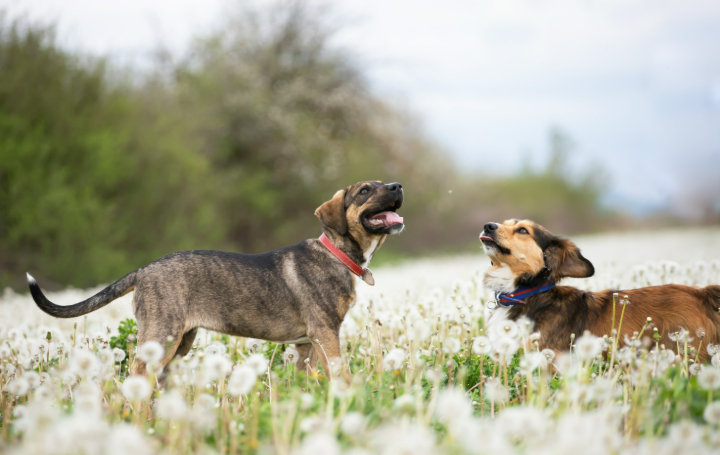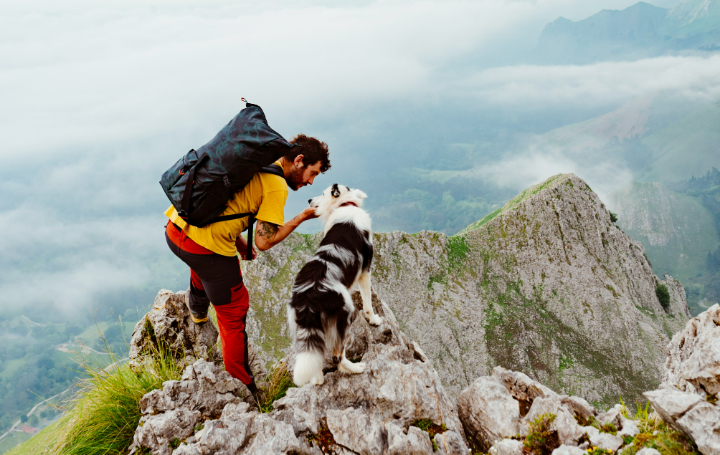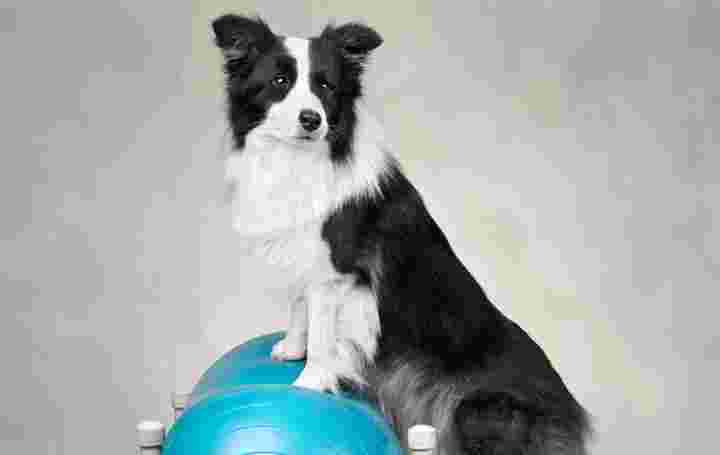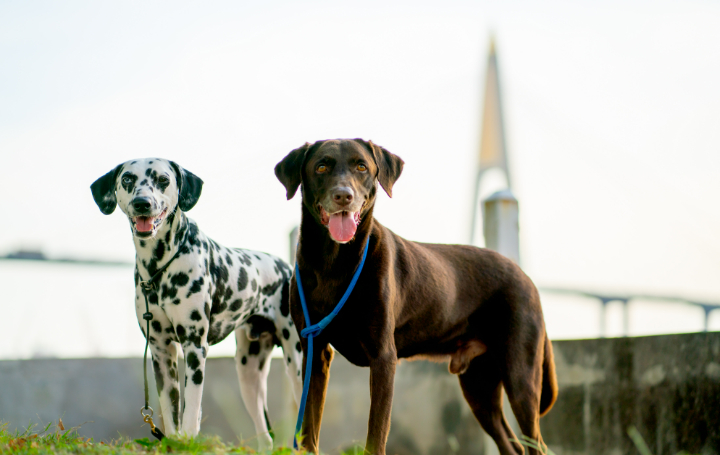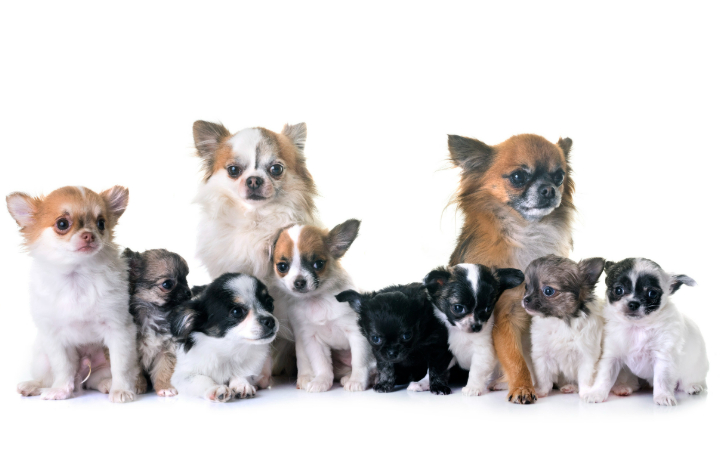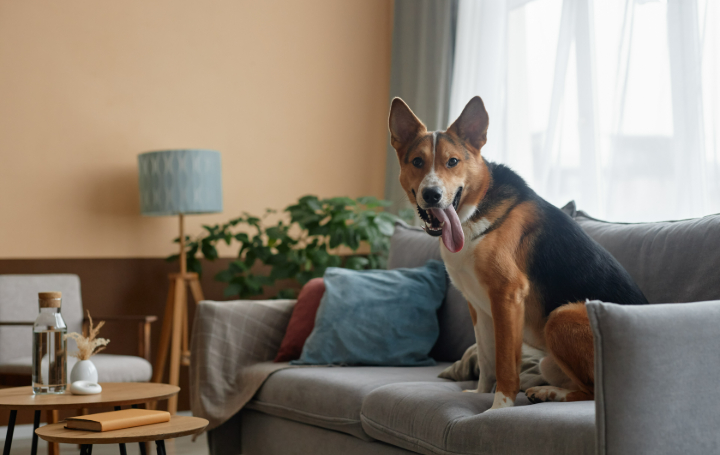Dogs and Seasonal Changes: How to Adjust Their Care Throughout the Year
Dogs are like family, and just like us, they feel the shift in seasons. Whether it’s the blazing summer heat or the chilly winter frost, our furry friends need a little extra care to stay comfortable and happy all year round. Here’s how to adjust their care throughout the seasons to ensure they thrive no matter what Mother Nature has in store.
Spring: The Season of Reawakening
As the snow melts and flowers bloom, spring is a wonderful time to enjoy the outdoors with your dog. However, it comes with its own challenges. Here’s what to keep in mind:
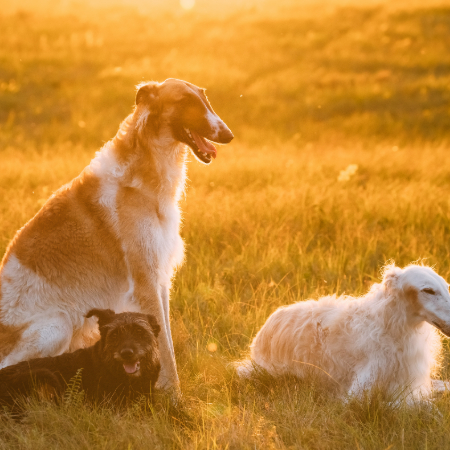
1. Tackle Shedding Season
Spring often means shedding, as dogs lose their winter coats. Regular brushing helps keep your home fur-free and your dog’s coat healthy. A slicker brush or de-shedding tool can work wonders for removing loose fur.
2. Watch Out for Allergies
Dogs can be allergic to pollen, just like humans. If your pup starts sneezing, scratching, or developing red eyes, it could be seasonal allergies. Consult your vet for advice, and keep your walks during low-pollen times like early mornings or after rain.
3. Beware of Bugs
Ticks and fleas become active in spring, so update your dog’s flea and tick prevention treatments. After hikes or walks in wooded areas, do a quick check for any unwelcome hitchhikers.
4. Spring Cleaning Safety
If you’re freshening up your home, keep cleaning products out of your dog’s reach. Opt for pet-safe cleaners to avoid accidental ingestion or irritation.
Summer: Fun in the Sun
Summer is a season of adventure, but the heat can be hard on your dog. Follow these tips to keep your furry companion cool and comfortable:
1. Hydration is Key
Always ensure your dog has access to fresh, clean water. Carry a portable water bowl during walks or trips to the park. Adding ice cubes to their water can also help keep them cool.
2. Protect Those Paws
Hot pavement can burn your dog’s paw pads. Test the ground with your hand—if it’s too hot for you, it’s too hot for them. Walk during cooler times of the day, like early morning or evening.
3. Never Leave Them in the Car
Even a few minutes in a parked car can be deadly for dogs in summer. Always take your pup with you or leave them safely at home.
4. Provide Shade and Cooling Options
If your dog spends time outside, make sure they have plenty of shade. Kiddie pools or cooling mats can be a fun and effective way to keep them comfortable.
5. Limit Exercise in Heat
Dogs can overheat quickly. Avoid intense activities during peak heat hours, and watch for signs of heat exhaustion like excessive panting, drooling, or lethargy. If you notice these, get them to a cool spot immediately and offer water.
Fall: Crisp Air and Colorful Leave
Fall is a favorite for many dog owners—and for good reason! Cooler temperatures and fewer bugs make it perfect for outdoor fun. However, it’s still important to stay vigilant:
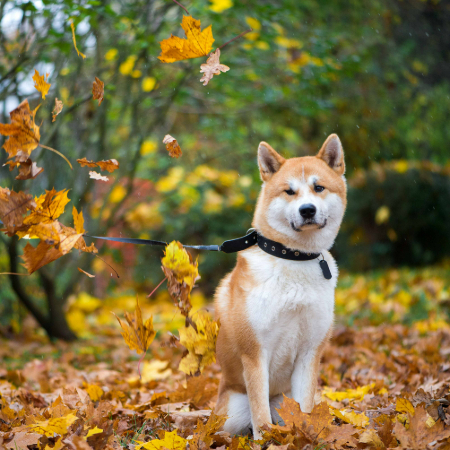
1. Seasonal Shedding Returns
As dogs prepare for their winter coats, you might see another round of shedding. Keep up with regular brushing to manage the fur and reduce matting.
2. Beware of Mushrooms
While on walks, keep an eye out for wild mushrooms, as some can be toxic to dogs. Teach your pup the “leave it” command to avoid accidental snacking.
3. Be Visible
With shorter daylight hours, invest in reflective gear or LED collars for your dog to stay visible during evening walks.
4. Monitor Fall Treats
Halloween and Thanksgiving often mean more sweets and rich foods around the house. Keep chocolate, grapes, raisins, and other toxic foods out of reach. Remind guests not to feed your dog table scraps without asking you first.
Winter: A Time for Cozy Snuggles
Winter can be magical, but it’s also a season where extra care is crucial. Cold temperatures and icy conditions can be tough on dogs, especially smaller breeds or those with short coats. here’s how to keep them safe and snug:
1. Bundle Up
Not all dogs are built for the cold. If your pup shivers outside, invest in a dog sweater or jacket. Look for waterproof options for snowy days.
2. Protect Their Paws
Snow, ice, and road salt can irritate or injure your dog’s paws. Use pet-safe paw balms or booties for protection, and wipe their paws after walks to remove salt or chemicals.
3. Adjust Their Diet
Dogs that spend a lot of time outdoors in winter may need extra calories to stay warm, while indoor dogs might require less food due to decreased activity. Consult your vet to find the right balance.
4. Provide Warm Sleeping Spots
Ensure your dog’s bed is in a warm, draft-free area. Orthopedic beds with extra cushioning are great for older dogs who may feel joint pain in colder weather.
5. Avoid Over-Bathing
Frequent baths can dry out your dog’s skin in winter. Use moisturizing shampoos and conditioners, and always dry them thoroughly after a bath.
General Tips for Year-Round Care

Regular Vet Checkups: No matter the season, keep up with your dog’s health checkups. Vaccinations, dental care, and routine exams are essential for their overall well-being.
Stay Active: Adapt your dog’s exercise routine to the season. Whether it’s indoor play during winter or long hikes in fall, keeping them active helps prevent boredom and keeps them fit.
Mental Stimulation:: Interactive toys, puzzle feeders, and training games are great ways to engage your dog’s mind, especially during days when outdoor time is limited.
Listen to Your Dog: Pay attention to your dog’s body language and behavior. They’ll often let you know if they’re too hot, too cold, or not feeling their best.
Embrace the Seasons Together
Caring for your dog through seasonal changes doesn’t have to be a chore. With a little preparation and attention, you can ensure your pup stays happy and healthy all year long. Plus, adapting to their needs is a great way to strengthen your bond. So grab that leash, pack some treats, and enjoy everything each season has to offer with your best furry friend by your side!
Doglime for more dog-related information.
Tags
